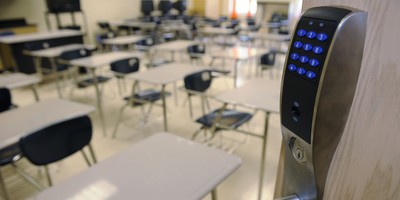In 1990, in one of the most innovative developments in modern American education, the Milwaukee public schools created a parental choice system. Some low-income parents got vouchers that could be used to send their children to private schools.
It was a richly promising idea. The new option would let disadvantaged kids escape wretched public schools. Competition would force public schools to improve or close. Students would learn more.
Twenty years have passed. Last week, researchers at the School Choice Demonstration Project at the University of Arkansas published their latest assessment of the results.

What did they find? Something unexpected: Kids in the program do no better than everyone else. "At this point," said professor Patrick J. Wolf, "the voucher students are showing average rates of achievement gain similar to their public school peers."
This is a surprise to anyone who originally supported the voucher idea -- as I did. But it's entirely consistent with the record elsewhere.
In Washington, D.C., voucher kids improved a little in reading after three years, but not in math. A 2009 review of all the studies on voucher programs found few gains, "most of which are not statistically different from zero." This type of school choice, whatever its merits, has not accomplished what it was supposed to do.
In that, it resembles just about every idea offered by liberals, conservatives or anyone else in recent decades. Coming up with solutions for public education, it turns out, is easy. Coming up with solutions that actually work -- well, that's another story.
The latest trend in education reform is charter schools -- independent institutions that are publicly funded but free of the usual restrictions on hiring, firing, curriculum, instruction and so on. Today, there are some 4,700 charter schools enrolling 1.4 million kids.
Recommended
Like vouchers, they are supposed to stimulate improvement by expanding options, fostering a rush to quality. Like vouchers, they have fallen way short of expectations.
In some places, there is evidence that students who win lotteries that let them go to charter schools do better than students who lose out. In New York City, Stanford University economist Caroline Hoxby found evidence that the charter school kids progress more rapidly than their peers in public schools.
Her study doesn't resolve why. Do the charter schools have better educational methods? Or do the kids just function better when surrounded by motivated kids (or kids with motivated parents)?
The answer is important. Better educational methods can be duplicated in other schools. But no one knows how to increase the supply of motivated families.
In any case, New York is not exactly the norm. A study last year by Stanford's Center for Research on Education Outcomes (CREDO) found that overall, "charter students are not faring as well" as other public school pupils.
These findings may be heartening to liberals who thought the whole school choice movement was a snare and a delusion. But the real world has also demolished liberal notions of how to improve educational outcomes.
More money for schools? Between 1960 and 2005, per-pupil spending in the United States quadrupled, adjusting for inflation. Yet student performance on reading and math tests stayed put.
Smaller classes? As Eric Hanushek and Alfred Lindseth note in their book, "Schoolhouses, Courthouses, and Statehouses," almost three-quarters of the studies conclude that class size doesn't affect student achievement.
Anyone who still puts stock in expanded resources has to contend with the dismal experience of the Kansas City public schools, which got a huge infusion of money when a federal judge essentially took them over in 1986.
Facilities were radically upgraded, classes shrank, new programs proliferated, teachers got raises, and every school became a magnet school. But students didn't learn any more than before. The schools got everything a supporter of old-fashioned public education could have asked for, and they couldn't educate kids any better.
What should we learn from these experiences? Not that nothing works, but that few if any remedies work consistently in different places with different populations. We shouldn't expect that broad, one-size-fits-all changes imposed by the federal government -- such as those offered by the Obama administration -- will pay off in student performance.
From the local school district to the federal Department of Education, humility, caution and open-mindedness are in order. Because right now, the main thing we know about improving schools is that we don't know very much.

























Join the conversation as a VIP Member